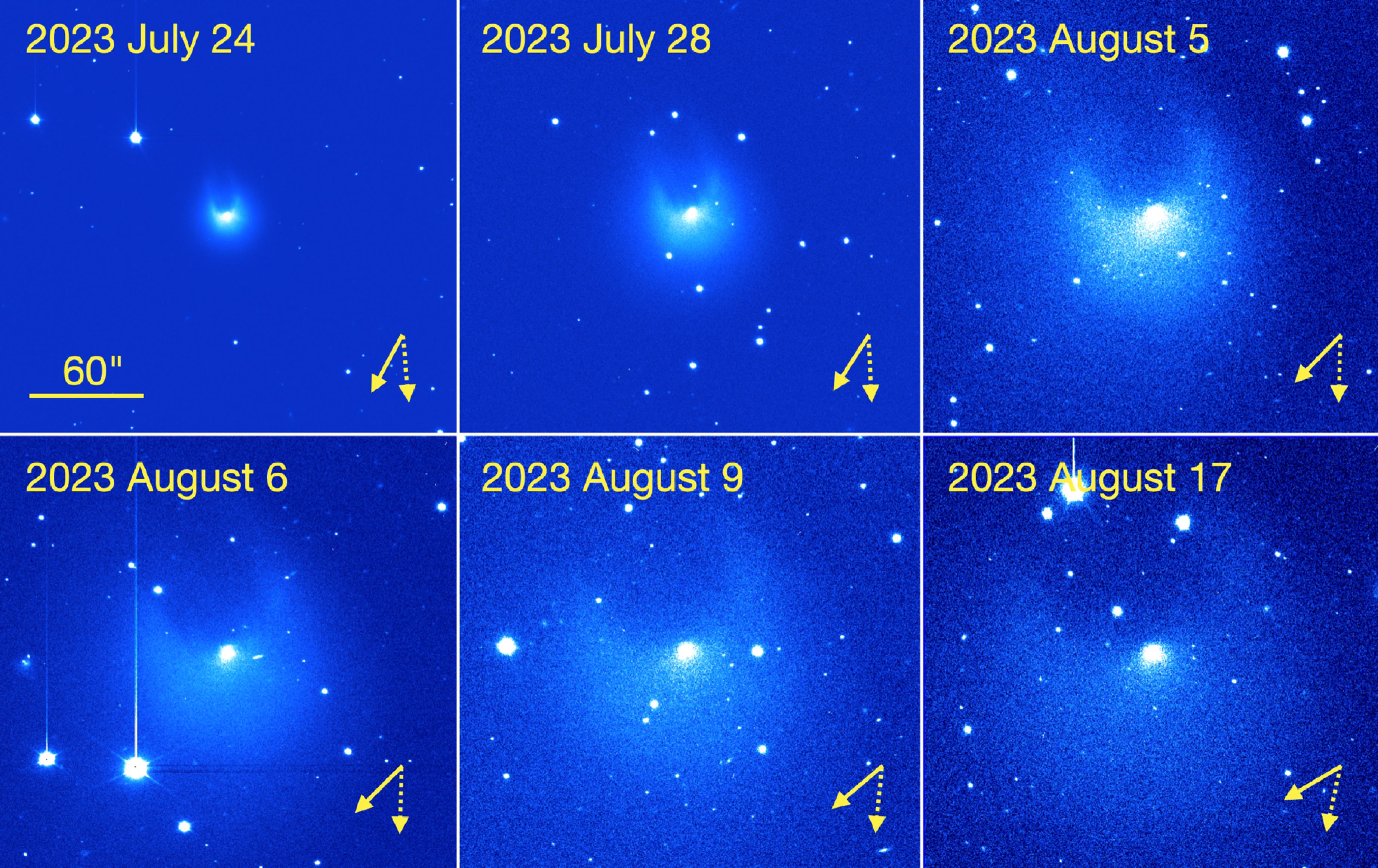 Most
known comets come from either the Kuiper belt (beyond Neptune) or the Oort
cloud (out towards the stars). So-called Halley type comets (HTCs) are a
very under-studied group intermediate between these populations. It is not
clear if they are more similar to the Kuiper belt or the Oort cloud comets, and
their origins remain unknown. In a new paper (in press at The
Astronomical Journal) David Jewitt and colleague Jane Luu used several
telescopes to compare HTC 12P/Pons-Brooks with the class prototype 1P/Halley.
Surprisingly, although their orbits are very similar, 1P and 12P behave
completely differently. Starting at 4 au from the Sun, 12P exhibited a
series of massive explosions caused by supervolatile ice (probably CO or CO2),
each of which gave the comet a peculiar horned appearance. By comparison,
activity in comet Halley varied smoothly on approach to the Sun, with no
similar outbursts or morphology. The trapping and long-term preservation
of supervolatiles are only possible at very low temperatures. One
possibility is that the two comets were formed at different places and
temperatures in the Sun's protoplanetary disk, such that 1P either never had or
has already lost most of its supervolatile material. Future measurements
of other HTCs are needed to reveal the true diversity of this enigmatic
population. - Dave
Most
known comets come from either the Kuiper belt (beyond Neptune) or the Oort
cloud (out towards the stars). So-called Halley type comets (HTCs) are a
very under-studied group intermediate between these populations. It is not
clear if they are more similar to the Kuiper belt or the Oort cloud comets, and
their origins remain unknown. In a new paper (in press at The
Astronomical Journal) David Jewitt and colleague Jane Luu used several
telescopes to compare HTC 12P/Pons-Brooks with the class prototype 1P/Halley.
Surprisingly, although their orbits are very similar, 1P and 12P behave
completely differently. Starting at 4 au from the Sun, 12P exhibited a
series of massive explosions caused by supervolatile ice (probably CO or CO2),
each of which gave the comet a peculiar horned appearance. By comparison,
activity in comet Halley varied smoothly on approach to the Sun, with no
similar outbursts or morphology. The trapping and long-term preservation
of supervolatiles are only possible at very low temperatures. One
possibility is that the two comets were formed at different places and
temperatures in the Sun's protoplanetary disk, such that 1P either never had or
has already lost most of its supervolatile material. Future measurements
of other HTCs are needed to reveal the true diversity of this enigmatic
population. - Dave
